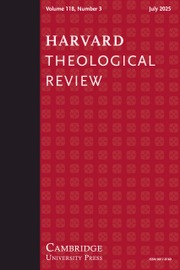No CrossRef data available.
Article contents
The Evangelization of Japan Viewed in its Intellectual Aspect
Published online by Cambridge University Press: 03 November 2011
Extract
When Protestant missionaries arrived in Japan with the religion of one God and the brotherhood of mankind, the native religions of Japan were in a deplorable condition. Buddhism had received such a fatal blow that there could be no hope of its revival. It was almost destroyed by the revolution of 1868. Many priests and monks had left their professions. Some became Shintoists; others became officers, soldiers, teachers, merchants, or artisans. Temples were deserted, and used for schools, offices, or barracks. Bells were converted into cannon. Sacred books were burned or sold as waste paper. Idols were standing neglected, partly stripped or broken—despised, mocked, and shunned. Compared with Buddhism, Confucianism was in a somewhat better state; but some of its progressive adherents, filled with admiration for western science, lost faith in the sacred books, and turned from the study of them to that of science. Those who still adhered to Confucianism were despised as conservative, bigoted, ignorant, and narrow-minded, unable to go forward in the advancing steps of the nation. At the time of the revolution Shintoism gained the ascendency, and for a time was considered a state religion. The decree of the emperor was given in the name of the heavenly gods. “Return to your origin and be grateful to the beginning” was the motto of the loyal and patriotic. But among the preachers and adherents of this movement there were many who went to extremes, insisting that along with the power of the emperor everything else that was ancient should be restored. Some of these nationalists were narrow-minded, especially in their attitude toward foreigners. They insisted that the holy land of Japan should not be trodden down and defiled by unclean strangers. Meanwhile the tide of the revolution changed its course from restoration to progress, from exclusiveness to open-mindedness. It began to flow directly against the principles of Shintoism then held by many. This decided its destiny. Shintoism met the same fate as Jewish Christianity in the first century of the Christian era. Thus Buddhism, Confucianism, and Shintoism had been, one after another, submerged in the overwhelming tides of the revolution when Christianity appeared in the extra-territorial establishments of foreign residents.
- Type
- Research Article
- Information
- Copyright
- Copyright © President and Fellows of Harvard College 1909




